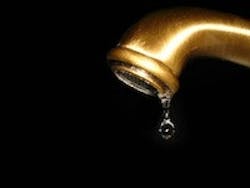EJ Water Products Compliant With Safe Drinking Water Act
Infrastructure access solutions provider EJ recently reminded customers and distributors that it has been proactive in certifying its line of fire hydrants and gate valves, in advance of a key Jan. 4, 2014 date for the federal Safe Drinking Water Act.
East Jordan, Mich.–based EJ is the manufacturer of WaterMaster hydrants, as well as FlowMaster resilient wedge gate valves. Those products are already compliant, including current inventories.
In January 2011, the President of the United States signed into law the Reduction of Lead in Drinking Water Act, which amended Section 1417 of the Safe Drinking Water Act (SDWA), and revised the definition for "lead free" as it pertains to "pipe, pipe fittings, plumbing fittings and fixtures." At that time a three-year timeframe was provided for the industry to transition to the new requirements.
One provision of the legislation requires that all products in contact with drinking water are to have a 0.25% maximum lead content for all wetted components using a surface based averaging formula. Non-compliant or obsolete products cannot be sold or installed after Jan. 4, 2014.
“Voluntary performance testing was conducted and all requirements were met per NSF 372 and NSF 61 specifications,” said Eric Hoogerhyde, EJ manufacturing/engineering manager. “Our WaterMaster BR250 and CD250 fire hydrants are approved to the NSF standards through UL. And our FlowMaster gate valves are approved through NSF. These products, including current inventories are compliant with the requirements of the Reduction of Lead in Drinking Water Act of 2011.”
Important wording in the amendment of SDWA appears to have greatly expanded the scope of the new federal rule. Previous interpretations exempted products such as fire hydrants. The new law uses language making it applicable to products described as "not anticipated" for use in potable water applications.
“We understand that information available to the EPA (U.S. Environmental Protection Agency) indicates that fire hydrants can be, and are, used in emergency situations to provide drinking water when there are disruptions to the normal operations of the distribution system,” said Gary Walker, director of marketing and product development at EJ. “An example would be work crews repairing a section of pipe below ground, and they configure a bypass using the fire hydrants to keep drinking water flowing to residents’ homes. Due to that type scenario, hydrants, as a class of product, would not qualify for the exclusion for pipes, fittings and fixtures used exclusively for non-potable services.”
According to Walker, gate valves 2-in. diameter and larger remain exempt from SDWA. “Even so, all of our gate valves are approved to meet NSF 372 (no lead) through NSF,” Walker said. “This means that FlowMaster gate valves meet or exceed the requirements of SDWA.”
And Walker said that it’s important to note whether state and local jurisdictions may have additional limitations or requirements regarding the use or sale and distribution of pipes, pipe or plumbing fittings, or fixtures that contain lead.
Source: EJ
